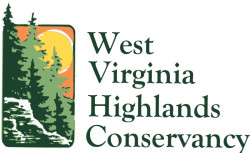Pipelines
Whether threatened by highways, timbering, overdevelopment, or extraction of minerals, protecting the special places of West Virginia was the primary concern of the founders of the West Virginia Highlands Conservancy.
With the boom of shale drilling throughout West Virginia, the proliferation of gas wells has been overwhelming, especially in the northwest counties. As many predicted the bubble has burst and the market for gas has plummeted. But the push is on to get the gas to those dried up markets some expect will revive. A multitude of questions have arisen concerning the many in-state gathering pipelines as well as the major transmission pipelines proposed to cut through vulnerable portions of the state, especially National Forest Lands, trout streams, and areas underlain with caves and karst geology
The Atlantic Coast Pipeline (Dominion), Mountain Valley Pipeline (EQT), and WB Xpress and Mountaineer Xpress pipelines (Columbia Gas) are among those of particular concern. Where are the markets for the gas? Who benefits from the pipelines? Which of the lines deliver gas to local communities in West Virginia and Virginia? Do we need ALL of these pipelines?
West Virginia Highlands Conservancy has joined with partners in Virginia and elsewhere to prevent construction of pipelines that will carve up public lands and damage mountain streams and important geological features of the region. We are participating in Federal review of the major transmission lines and meeting with state agencies responsible for overseeing state permitting.
One of our partners, The Dominion Pipeline Monitoring Coalition (DPMC), has published an online interactive map depicting environmental risks and sensitivities associated with the proposed Atlantic Coast Pipeline.
The purpose of the ACP-EMS is to organize and provide access to environmental information related to ACP permitting and oversight.
The geographic focus of the ACP-EMS includes approximately 200 miles of the western mountainous and upland section of the proposed pipeline.
Current information layers include:
Alternate pipeline corridors
Construction access roads
Public conservation lands
Corridor slope steepness
Corridor erosion potential
Trout streams
Surficial karst distribution
Virginia map-documented sinkholes
Potential horizontal drilling locations and staging areas
Cow Knob salamander impact corridor
Red spruce ecosystem restoration areas
more to come . . .
The ACP-EMS is a work in progress undertaken by the Dominion Pipeline Monitoring Coalition and partner organizations. We invite suggestions and collaboration.
Access the ACP-EMS and User’s Guide via the Dominion Pipeline Monitoring Coalition website. The links are on the home page at the top of the right-hand sidebar.
More about the Dominion Pipeline Monitoring Coalition and other partners at the LINKS
